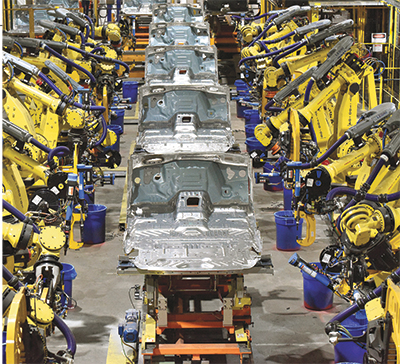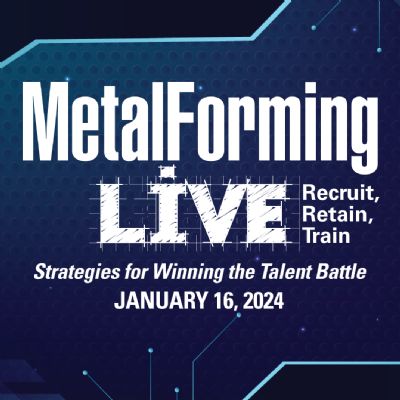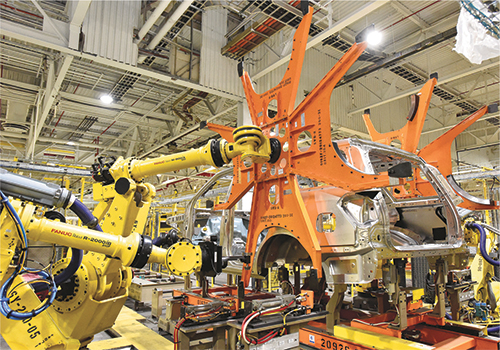3D printing could bring supply chain closer to customers. More than just supplying replacement parts, 3D printing promises much more to vehicle manufacturers and suppliers. This includes potentially greater customization in the vehicle specification and manufacturing process, reduction in lifecycle costs and relocation of the supply chain closer to customers.
“I believe a consequence of the emergence of 3D printing will be a reduction in supply-chain distribution costs,” writes G. David Gerrard, managing partner of Cornerstone Growth Advisors, in an opinion piece in Transport Topics. “You won’t have the cost of having to first manufacture and then ship parts across the country. You can print the part closer to where it is needed and eliminate a portion, or all, of the warehousing and distribution. This will bring the supply chain closer to the end user, where parts procurement is more ‘on demand.’”
IoT, blockchain and more. Technology developments within the past five years involving the Internet of Things (IoT), machine learning, mixed reality and blockchain will shape supply-chain tends in 2018 and beyond. That’s according to Anant Kadiyala, director of blockchain and IoT industry solutions at Oracle, in a Manufacturing Business Technology article at mbtmag.com. Supply-chain applications include end-to-end visibility, product tracking, fraud, settlements, compliance, productivity, worker safety and delivery speed.
 |
| Production tallies, forecasts and supply-chain trends all will be on the agenda at PMA’s Automotive Parts Suppliers Conference, April 25-26 in Detroit, MI. |
To hear how such technology advances can impact metalformers and fabricators, and how your colleagues are employing these advancements successfully, read Internet of Things for Metalformers and Fabricators, in this issue beginning on page 38. And, for details on MetalForming magazine’s IoT for Metalformers and Fabricators conference, April 18-19, 2018, in Nashville, TN, visit www.metalformingmagazine.com/iot.
Get the Auto Low-Down at APSC
Against this unique and shifting backdrop, suppliers will convene in Detroit, MI, April 25-26 for the Precision Metalforming Association’s Automotive Parts Suppliers Conference. Celebrating its 25th year, the conference provides educational sessions, networking and group discussion on the latest advancements and outlook for the automotive industry. It’s an ideal forum for CEOs, presidents, owners and other senior-level automotive-sector executives to obtain timely automotive-industry trend analysis; hear production forecasts that can be used to develop marketing plans; network with automotive-supplier peers; benchmark; and discuss strategic trends and changing conditions in the automotive market.
The conference welcomes a spectrum of industry experts speaking on important automotive topics:
- Joe Langley, an economist with IHS, summarizes the IHS Automotive Light Vehicle Production Forecast, which spans more than 50 countries, 600 plants and 2300 models over a 7-year forecast horizon.
- Business advisor Lawrence D. Burns, Ph.D, in his presentation, New Age of Mobility, describes how the freedom and independence provided by today’s automobiles is being redefined. Autonomy promises better mobility and safety for more people at lower costs. But the implications for the automobile industry could be profound. Burns leads attendees through what that journey may look like and how to best prepare.
- Dan Sharkey, partner with Brooks Wilkins Sharkey & Turco PLLC, examines legal and regulatory developments as well as their impacts on automotive suppliers.
- Plante Moran’s Lou Longo, international consulting leader, Alejandro Rodriguez, country manager, and Daron Gifford, automotive leader, lead an interactive panel, It’s a Chain Reaction: NAFTA and Your Business. The panel discussion explores the status of NAFTA negotiations and their possible impacts on the automotive supply chain.
- In Automotive Lightweighting: The Past, Present and Future, Abey Abraham, managing director at Ducker Worldwide, explores the increased use of lightweighting materials driving advancements in hot forming steel, warm forming aluminum and composite molding, along with new joining methods using lasers, fasteners and adhesives.
- Metal-Additive Manufacturing for Automotive, a special session sponsored by MetalForming’s sister publication, 3D Metal Printing, features presentations by two industry experts. Practical Guidance from Design to Production, by Dan Skulan, national sales manager for Renishaw, shares a systematic approach to automotive design, prototyping and production that uses a comprehensive suite of technologies. Challenges and Opportunities from the E.U. to the U.S., by Jon Walker, automotive specialist with EOS, discusses how additive manufacturing can play a role in future mobility.
The event also features an APSC-anniversary networking reception and dinner at the Detroit Athletic Club. For more details and to register, visit www.pma.org/apsc. MF
Technologies: Additive Manufacturing, Management, Quality Control
Comments
Must be logged in to post a comment. Sign in or Create an Account
There are no comments posted. Management
ManagementDOL Announces Nearly $200 Million Allotted for Registered Ap...
Friday, March 1, 2024
 Management
ManagementMetalForming LIVE 2024: Recruit, Retain, Train
Monday, January 22, 2024
 Webinar
Webinar 









 Podcast
Podcast